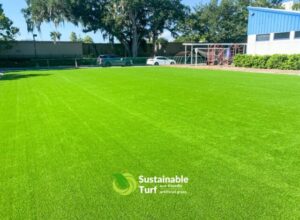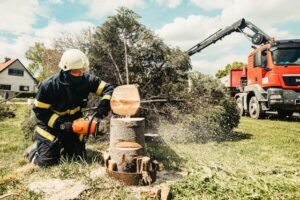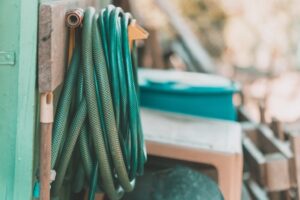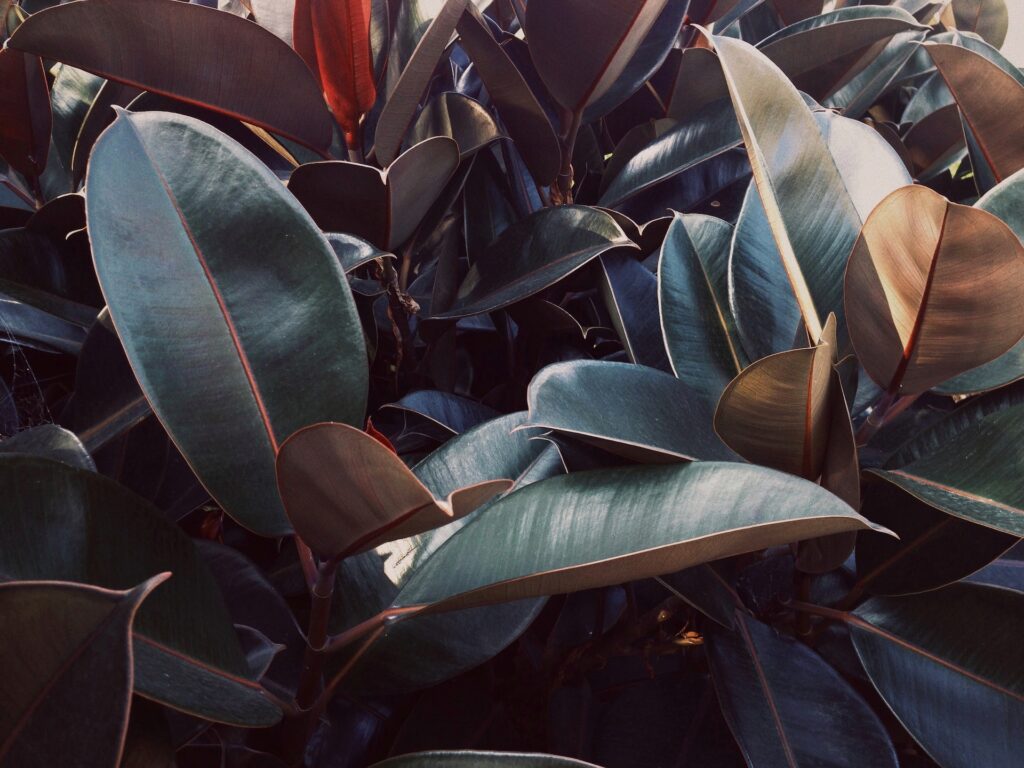
Rubber plants (Ficus elastica) are a popular choice for indoor greenery due to their glossy, deep-green leaves and robust growth habits. With the right care, they can thrive and become a beautiful centerpiece in your living space. This comprehensive guide will walk you through the essentials of indoor rubber plant care.
Introduction to the Rubber Plant
Hailing from the tropical rainforests of Southeast Asia, the rubber plant not only holds ornamental value but was historically tapped for its latex. The sap was used to produce rubber, thus its common name. It’s an evergreen tree in its natural habitat but is often kept as an indoor shrub in homes and offices worldwide.
Choosing Your Rubber Plant
- Size and Variety
Depending on their intended location indoors, rubber plants can be bought as small pot plants or larger statement pieces. Varieties differ in foliage color and pattern:
1) Ficus elastica ‘Decora’: Characterized by its bold, green leaves.
2) Ficus elastica ‘Rubra’: Notable for its reddish midrib and dark green leaves.
3) Ficus elastica ‘Variegata’: A crowd-pleaser with its white-edged green leaves.
- Nursery Selection
It’s crucial to buy from a reputed nursery. Look for plants with vibrant, spot-free leaves. Check the underside for pests. Gently tap or shake the pot to ensure the plant isn’t root-bound.
Planting Your Rubber Plant

- Pot and Soil Selection
Pot: Pots with drainage holes prevent water stagnation. Terracotta pots are breathable, promoting root health.
Soil: Rubber plants prefer slightly acidic soil. A mix of peat, pine bark, and perlite ensures good drainage and pH balance.
- Repotting
Repotting refreshes the soil and provides space for growth. It’s a good time to inspect roots and remove decayed parts.
Watering Needs
- Frequency
Watering is a balancing act. Overwatering causes root rot, while underwatering dries the plant. In growth months (spring and summer), water when the top inch of soil feels dry. In dormancy (autumn and winter), reduce frequency.
- Technique
Water evenly around the plant until water seeps through the drainage holes. Avoid splashing water on leaves, preventing fungal infections.
- Water Quality
Rubber plants are sensitive to fluoride in tap water, which can cause leaf-tip browning. Using distilled or rainwater mitigates this.
Light and Temperature Needs
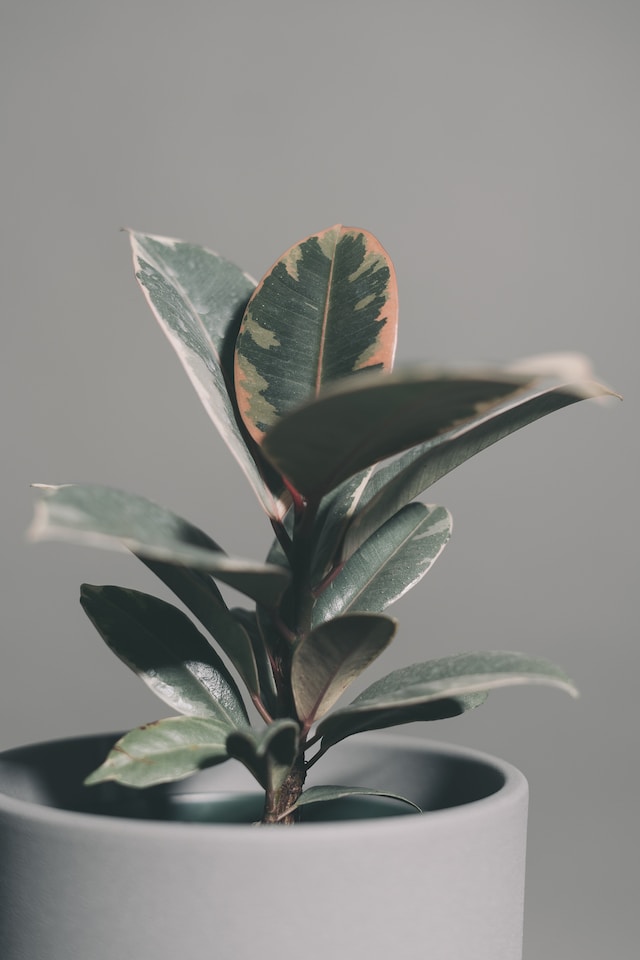
- Light
While they love bright light, direct sun can cause leaf burn. North or east-facing windows are ideal. If placed in a south or west-facing window, use sheer curtains as a buffer.
- Temperature
Consistent temperatures between 60°F and 75°F are optimal. Sudden cold drafts or heat surges can stress the plant, causing leaf drop.
Humidity and Air Circulation
Being tropical, rubber plants relish high humidity. However, stagnant moist air invites fungal diseases.
- Misting: Regularly spritzing the plant mimics tropical humidity.
- Humidifiers: Placing a humidifier nearby can maintain the desired moisture level.
Tray with Pebbles: This old trick of placing the pot on a tray filled with water and pebbles ensures evaporative humidity without waterlogging the roots.
Good air circulation also prevents pest infestations. However, avoid placing your plant near HVAC vents, as this can dry them out.
Fertilization
A balanced liquid fertilizer, diluted to half strength, applied every month during the growing season, provides necessary nutrients. Over-fertilization can cause salt buildup, so flush the soil with plain water every few months.
Pruning and Shaping
- When to Prune
Pruning is best done when the plant is coming out of dormancy, ensuring fresh growth in spring.
- How to Prune?
Using sterilized shears, cut just above a leaf node. This not only keeps the plant compact but can also encourage branching.
- Shaping
For bushier growth, pinch out the growing tips on the branches. Tying branches loosely can guide their growth direction.
Common Pests and Diseases
Pests
Regular inspections are vital. Key pests include:
1) Spider mites: Tiny spider-like creatures. They leave fine webs on leaves.
2) Scale: Small, shield-like insects feeding on sap.
3) Mealybugs: Cottony-white pests often found in leaf axils.
All can be treated with insecticidal soaps, neem oil, or by wiping with a cloth dipped in rubbing alcohol.
Diseases
1) Leaf Spot: Brown spots with yellow halos, often caused by fungal infections due to wet leaves.
2) Root Rot: A consequence of overwatering. Symptoms include yellowing leaves and a rotten smell.
Both conditions require immediate attention: isolate the affected plant, trim affected parts, and repot in fresh soil.
Propagation
- Stem Cuttings
While propagating from cuttings is straightforward, success isn’t always guaranteed. Use a rooting hormone for better results.
- Air Layering
This method involves making an upward-slanting cut on a healthy stem, inserting a toothpick to keep the cut open, then wrapping moist sphagnum moss around it. Once roots appear, cut the stem below the rooting zone and pot it.
Toxicity
All parts of the rubber plant, especially the sap, are toxic when ingested. Symptoms include drooling, vomiting, and diarrhea. Ensure it’s out of reach of curious pets and children.
Conclusion
Rubber plants are relatively easy to care for, given their hardy nature. However, understanding their native environment helps replicate conditions conducive to their well-being. With a bit of love and attention, your rubber plant will not only grow but thrive, becoming a focal point of your indoor space.

